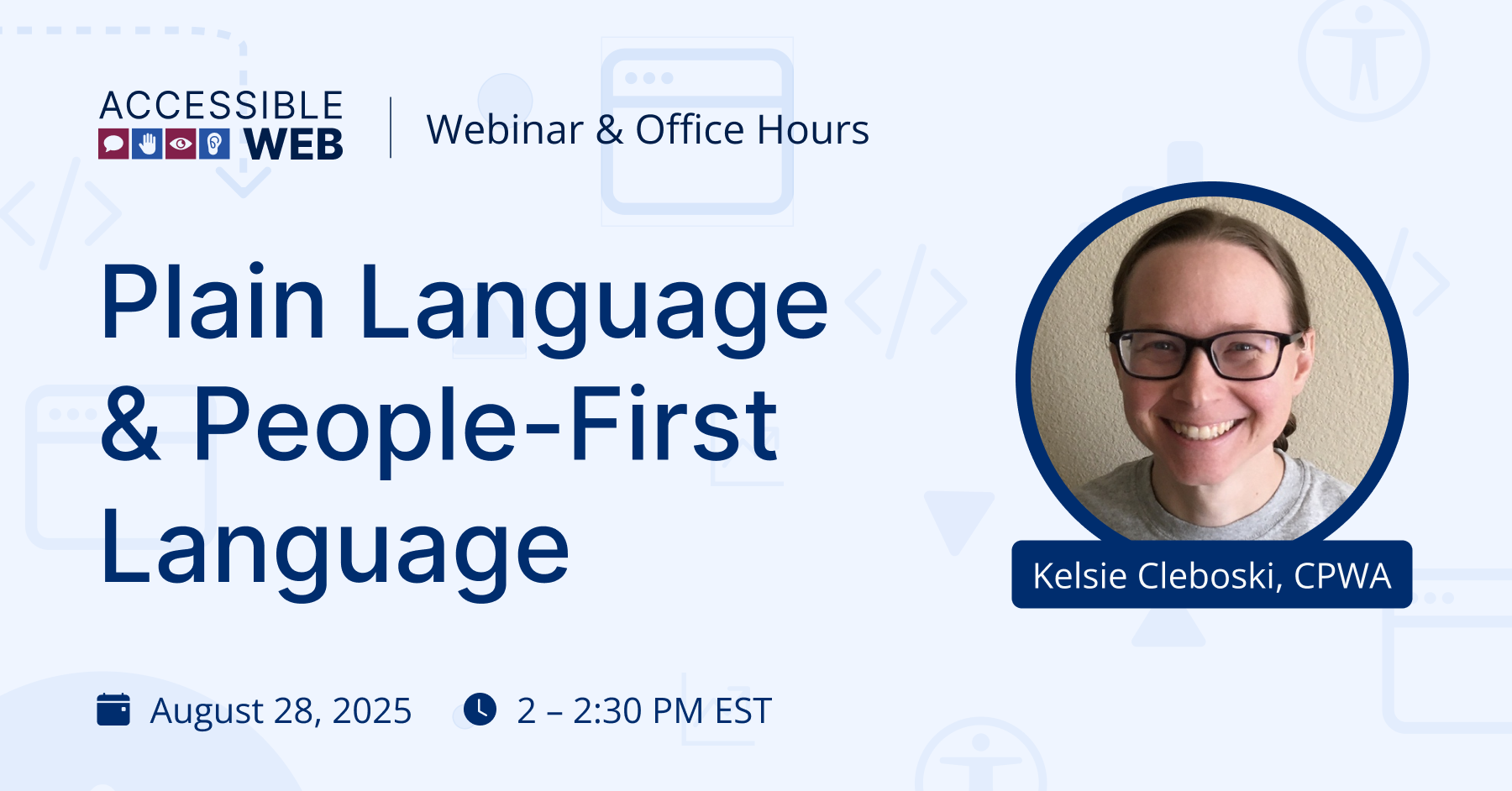
Plain Language & People-First Language | Webinar Video
Language changes, as do people’s preferences around it.
Webinar Recording
In this webinar, the Accessible Web team explores plain language and people-first language and where digital accessibility intersects with them. Learn current best practices when it comes to language. We’ll dive into questions like these:
- What is plain language, and why is it important?
- What is people-first language?
- Are there any localization issues? Community preferences?
- When in doubt about referring to people, what should I do?
With tips and considerations galore, we hope you’ll join us and bring your perspectives.
Plain Language is Better for Business
Ever received an email that is not clear? Of course you have. In my case, I’ve sent more than a few unclear emails, too.
You then need to get back to the sender, dial in your tone, and ask follow-up questions. Then wait for a follow-up. If this is an external email, this process can take days.
All in all, this problem could be avoided by using plain language. And that’s just one example of plain language helping everyone understand things better. When you extend this to thinking about your users and the myriad ways they digest information, you can start to see how it becomes critical to be clear.
But please don’t confuse plain with boring! Just look at Hemingway.
Don’t Assume, Ask
When it comes to using people-first language, you can always ask people about their preferences. There isn’t a one-size-fits-all method with humans. From clothing to speech patterns, people vary in every single instance. That’s something to celebrate.
If you’re thoughtful, not making assumptions, and open to feedback and change, you’re likely already ahead of the curve.